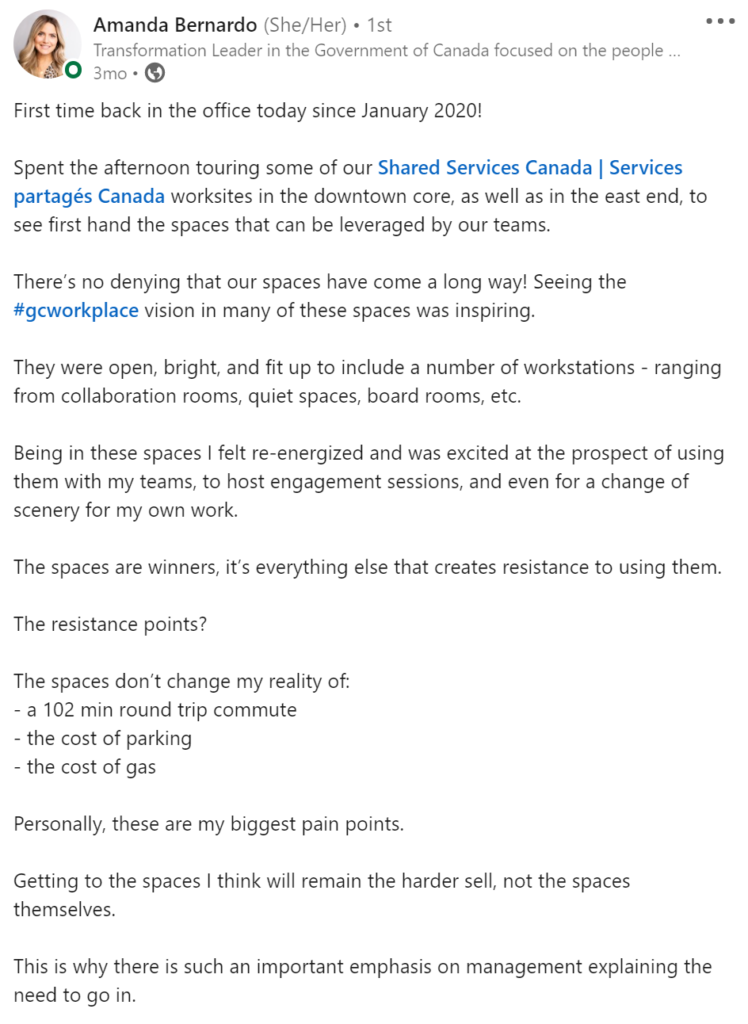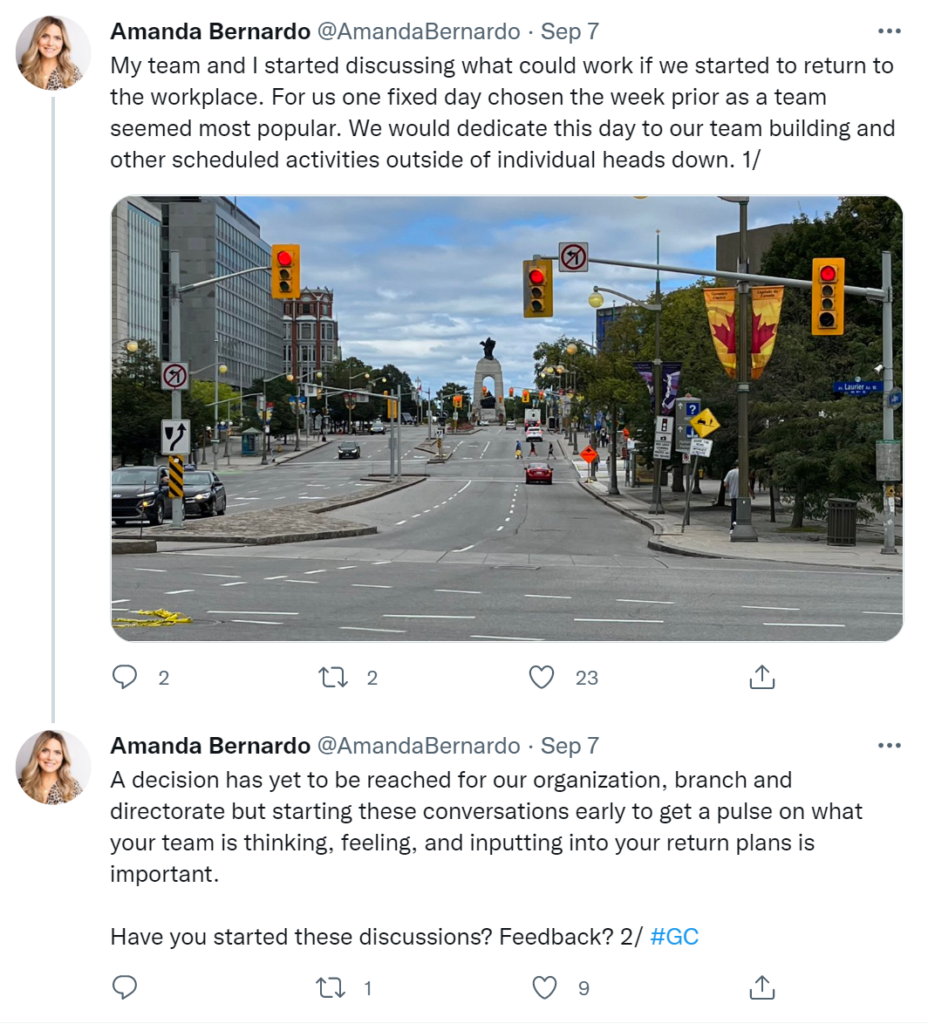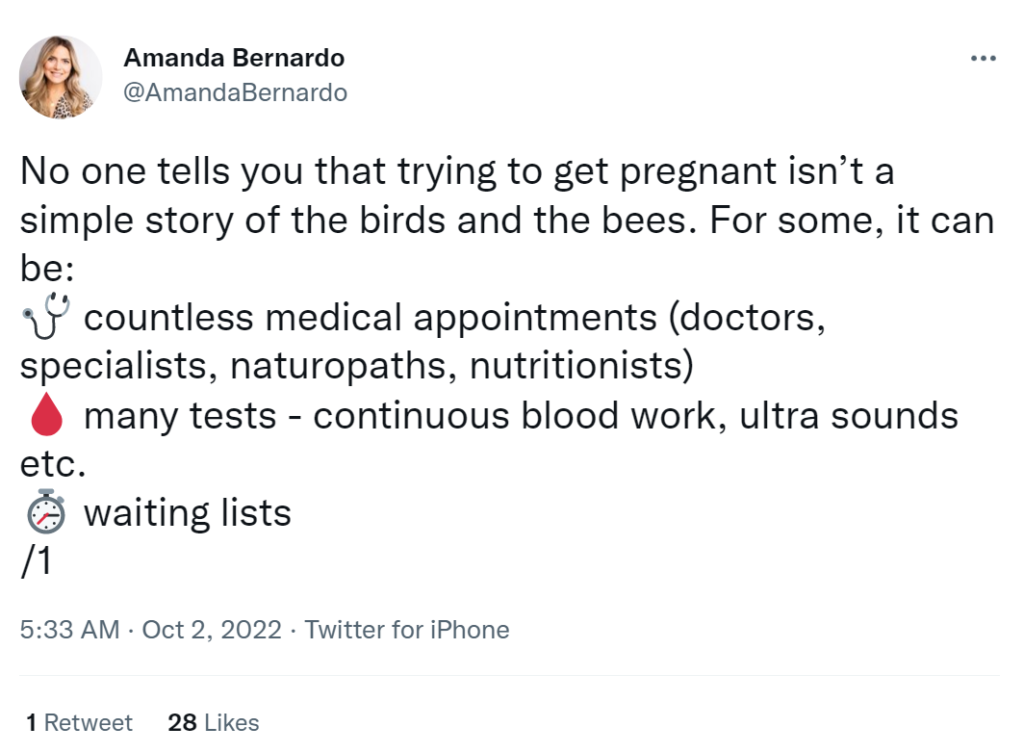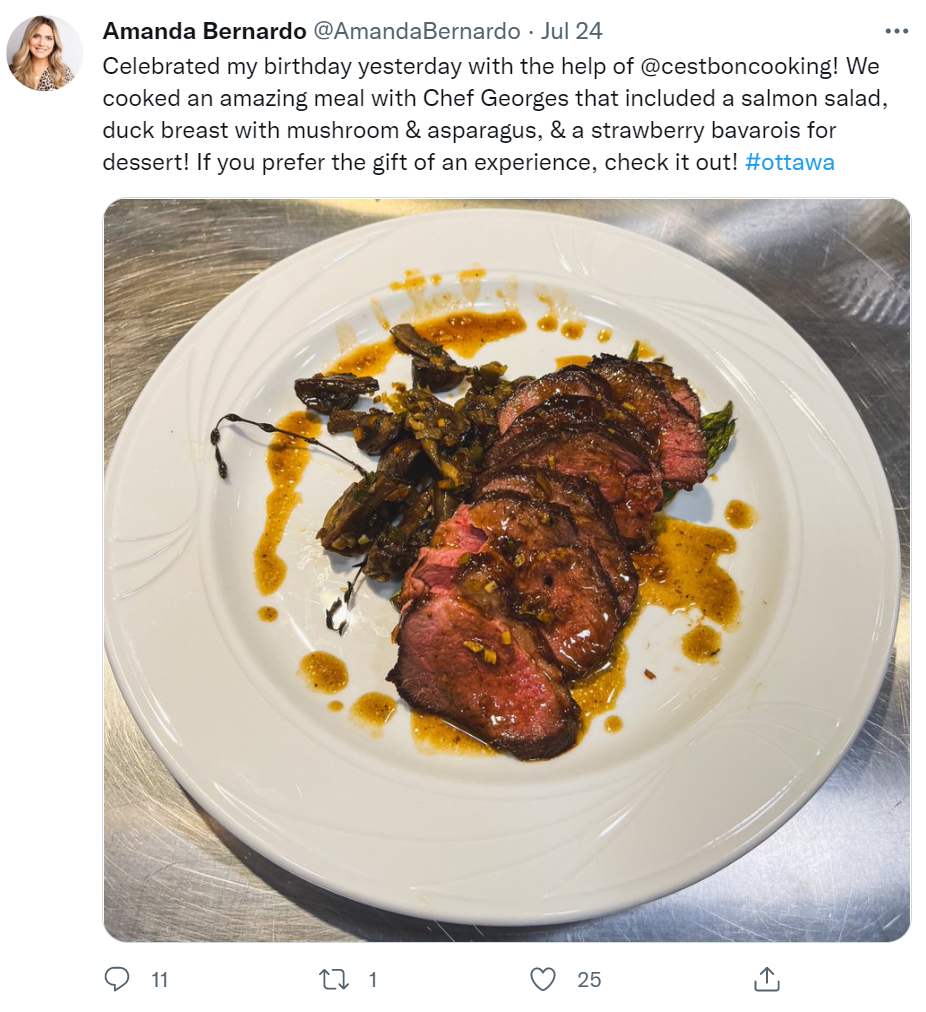Back in early 2020, I was researching the different ways governments around the world were equipping their staff – public servants – with the digital skills they would need to continue delivering services of value into the future. The Government of Canada’s Digital Academy jumped out as one of the more progressive, collaborative and transparent approaches I could see. Of course, no one could predict what was about to hit… But even before the COVID wave swept across the globe, shifting our old ways of working for good, the Government of Canada had seen the importance of digital, invested in upskilling staff, and were well-positioned to reap the rewards.

Someone I came across in my research back then was Amanda Bernardo. In those days, she managed that Digital Academy, and I could see from her posts on LinkedIn and Twitter that she really was at the frontline of transformational change within the public service.
Two years on, Amanda now leads a team overseeing organisational change management and enterprise transformation within the Government of Canada. She’s walked the talk, led by example, experienced the benefits and counseled other leaders on how they too can harness their digital presence in our hybrid work world.
And, when I look back, her pioneering efforts over many years online are the sole reason she was visible to me, why we connected, and how she’s ended up here on the Your Digital Reputation podcast.
Here’s a snapshot of our conversation. I hope you enjoy Amanda’s insights as much as I did.
THE INSIGHTS + ADVICE.
Roger Christie: This hybrid work world – it’s very different from any other time in history. We haven’t had a scenario where leaders have had an expectation to be so active online and at the same time, are expected to be active offline as well – particularly with their workforce given the detachment for so long. So, how can leaders balance the two? How can leaders maintain their digital presence built throughout the COVID years while at the same time, start to re-engage their workforces in the physical environment? Is that a challenge?
Amanda Bernardo: I definitely think it is a challenge and will continue to be a challenge for many leaders… When we talk about creating this in-person / remote world where you’re now asked to partially work at home and partially work in an office, we need to understand: What is the value of each?
And then when we translate that back to leadership and having that online presence versus the connection in person, I think the number one thing that I hear from most people is connection. There’s a certain connection you can have virtually and whether or not it’s genuine is up to how you manage your online presence. And what I mean by that is sometimes digital channels are just used by leaders as another mechanism to share, in our case, bureaucratic corporate messaging.
And in other cases, you can have real, genuine conversations. In my case, people slide into my direct messages and ask for mentoring or conversations and that’s where I try to be a leader and really have that genuine talk back. I also manage all my own accounts, I should say, but as you get higher in some of these rankings, that’s not always the case. So really understanding what genuine connection you can have online is important.
Then when it comes to the other connections in person, although hybrid work has drawn down a lot of walls – and we especially hear this with our regional folks that they can now connect with National Office in ways they never had before, it’s a huge win – at the same time, we’re also seeing a little bit of disconnect. I can’t walk down the hall and run into an assistant deputy minister or run into a colleague in a different area of work. Or perhaps talk to my president in the elevator. Those opportunities are not really there anymore.
And so in the virtual world, as a leader you have to be more intentional with how you connect with your employees. What we’re seeing is things like town halls and meetings being done through MS Teams and other virtual platforms. But how can we really get at the heart of some of those conversations that may or may not happen in the virtual world, that can more naturally perhaps in person? That’s going to be the tug-of-war leaders are going to have to play with. Leaders need to ask: How can I ensure that I’m having the right conversation using the right tools available to me in the right context, whether it be online or in person?
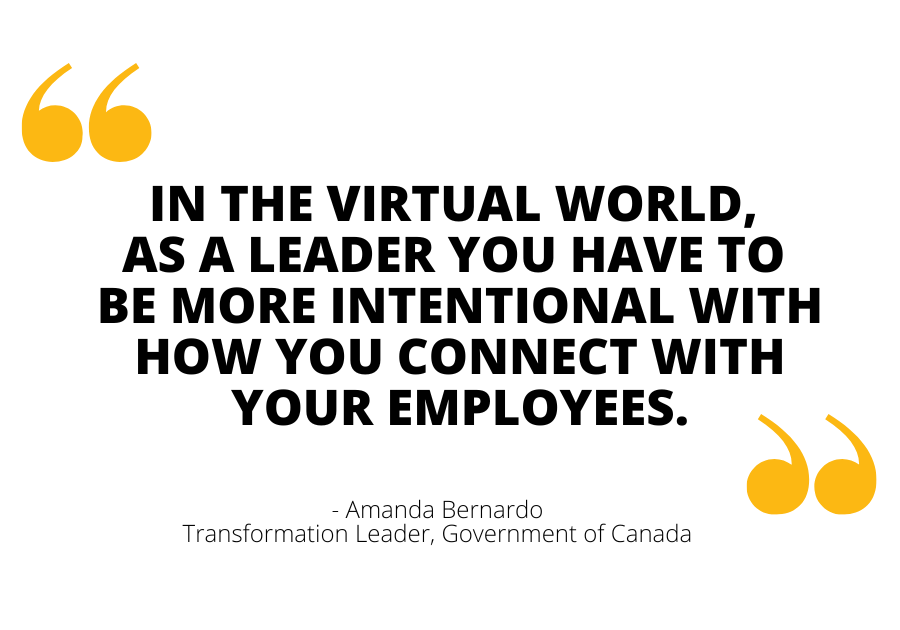
Roger Christie: From your perspective, when you’re talking to others or even sharing your own experiences, can you pinpoint what are some of the benefits of having your own social media presence and the visibility that brings? What does that offer to leaders?
Amanda Bernardo: Oh, for sure. There’s a ton of benefits. A lot of times I find when I hire people they joke saying, “I know you from Twitter” or “I know you from LinkedIn”. What organisations need to realise is that the digital presence of your leaders, and even your employees, can serve as your ambassadors online. And in today’s day and age, especially where we see this war on talent, that is huge.
People can want to work for an organisation because of their mandate or because of the projects that they may have to offer. But at the end of the day, what we’re seeing from a lot of new hires right now is that people want to work for the right kind of leadership. And how do they assess that? Well, they’re looking at their digital footprint. That trail that’s been left behind over the years. You can have an interview and maybe say all the right things, but you can’t hide necessarily from what you have put online and in some cases that can regrettably be a negative hit to an organisation. In other instances when it’s done right, it can serve as a massive recruitment tool.
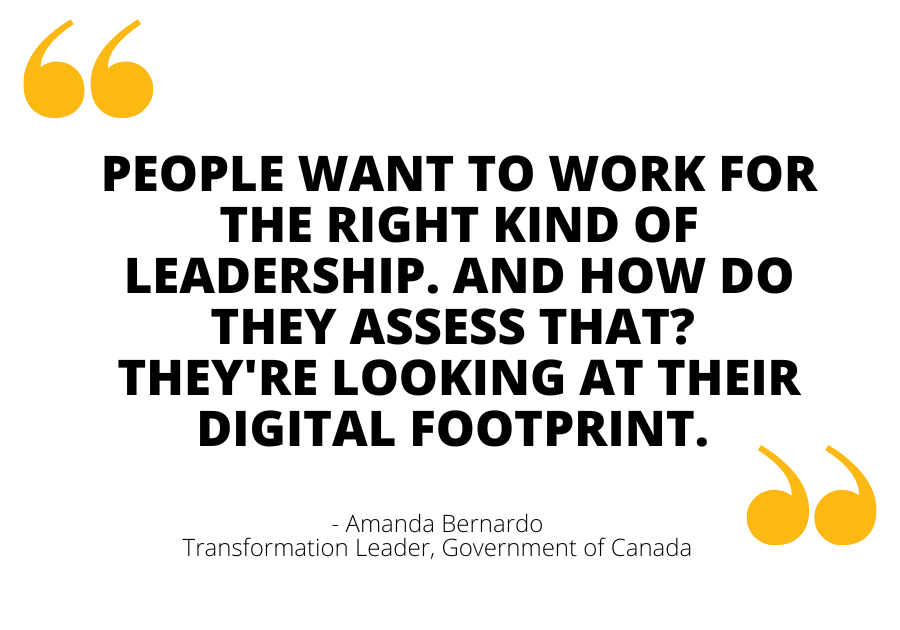
Amanda Bernardo:: So having that online presence helps organisations to highlight some of the things that you’re working on. For example, in the context of the federal public service, when I was little, I never said, “I’m going to go grow up and be a policy analyst.”
I don’t really think I knew what it was back then. And in that respect, the federal government is a little bit foreign sometimes to people who may be interested but don’t really know what type of jobs that can entail.
But when you look at social media, and you look at some of these leaders, you start to have this by default, open conversation around what people are working on, what motivates them and the different opportunities, whether it be experiential through job development or through the training that these organisations have to offer.
That in itself is a huge, huge benefit. And I think it will serve to help recruit people who are looking to work for organisations where leaders do make a difference, and that they can join a team and feel comfortable with the direction that their organisation is going knowing they have a great leader at the helm. So I think that’s a really key benefit in my eyes.
Roger Christie: I like what you’re saying. The way I’d summarise it is, you’ve got to first have awareness of the benefits of digital reputation to then drive that kind of literacy or capability building element within your team. This has to be complemented by intentionality and that intentionality is key to avoiding risk.
Because people are looking, people are monitoring these things. As we’ve talked about previously on the podcast, if you don’t think people are stalking your LinkedIn profile as a leader, it is happening – whether you want it to or not. Even if you don’t have a LinkedIn profile, avoiding the environment doesn’t make it go away – people are using other sources of online information to make decisions about you.
And that’s where intentionality is key because those little digital footprints and breadcrumbs that you described, those little moments, when used properly and when you have intentionality behind them, they’re incredibly powerful. Those little micro moments might even be a five word comment or reply to a colleague or to an industry partner. But those five words speak volumes, and that’s often more powerful than, as you were saying, that scripted interview. So if leaders can build that comfort and that familiarity with how to use these channels, as you said, that’s a talent magnet.
Amanda Bernardo: I couldn’t agree more. I’ll give you an example… I had posted something about a month ago about returning to work, about my own experience. I work on this file so it’s something that I’m very close to, and yes I’m promoting it and voting hybrid work. But at the same time, I also run into issues like my commute back into the office even though I’m promoting in person options now. And I flagged that on my LinkedIn saying, here was my experience.
And the next morning, I signed into my tablet and one of the leaders in my organisation had sent a note. I just quickly read the first line and it said, “I saw your LinkedIn post.” And my heart drops, thinking, “Oh no, am I in trouble? Yes? No? Is this a good sign?”
To know he had seen that post and reached out to me saying, “I really appreciate you sharing your thoughts and I’d love to talk more”; to know that my leader took the time to have that conversation, that made a difference to me. And that’s why I do it to others as I know that it will have a difference in their lives as well because you’re having a genuine conversation that can stem from something that has been posted online, which is really fantastic. And that to me is another great benefit of really magnifying the networking that can happen virtually. And this goes beyond just a ‘follow’. This goes to true conversation, which is really what I think the goal was when social media was created at the end of the day.
Roger Christie: That’s a really powerful example. This is an example of a leader validating someone’s thoughts. And with that specific example you give, even if your leader had come back and challenged some of the things you’ve said, even disagreed with them, the point is they’re listening. They’re interested. They’re engaging with you online and they’re taking the time to follow up and understand the views of their workforce. And I think that is such an undervalued but such an important part of digital participation for leaders. Not just the broadcast, not just the talking, but the listening.
And I think perhaps another relevant question to ask too Amanda, in your experience, and from what you’ve seen over the years, are leaders now seeing and treating their own individual social media profiles as official channels and therefore resourcing them like they would other official channels or are most still just dipping their toes in the water?
Amanda Bernardo: That’s a great question. I think for most leaders, depending on where you are in federal public service, these seem to be managed as official channels for communication. And I do tend to see many of these managed by communication shops, especially at the deputy minister or president level, depending on what the organisation is. That said, I do see other leaders, assistant deputy ministers or even managers and directors who are definitely managing their own channels, using this as an opportunity to share the work that they’re doing to network across the federal public service, and even to recruit as I had mentioned.
I think what I would like to see is more [digital] channels being used less for corporate messaging and more to see the genuine human side of leaders. I think sometimes leaders get caught up using these online platforms as another means to share corporate messaging. But at the end of the day, while that may be scattered throughout some of the content for the week, I think employees and even myself looking up to other leaders, we’re looking to see that human side of their life and of their leadership style. It’s nice to see people talk about things outside whatever corporate thing is happening.
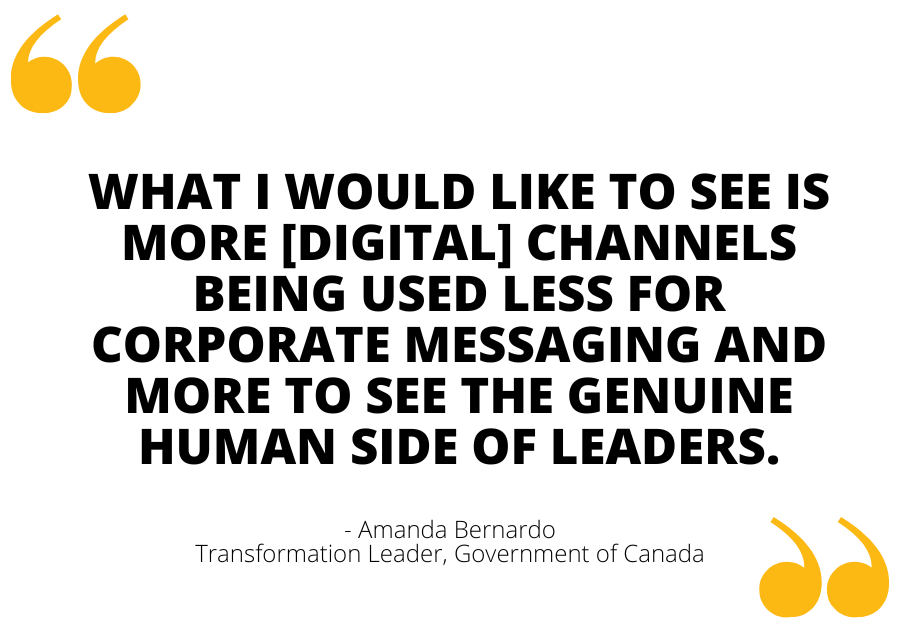
I get this often and a lot re my own digital presence here. Some people will joke and say, “You really tweet about it all, Amanda”. And that’s what I like to do, because I tell people, “My Twitter is an extension of my whole self.” I know on Twitter, for example, some people tend to have a private account for their personal life and then they tend to have another account for corporate or work related items. For me, it’s all in the mix; one day I’m talking about change management. One day, I’m talking about personal branding and creating a digital reputation. And then the other day, you may see a stellar recipe that I just conquered and I want to share it out to my audience. That humanises me to others and makes me relatable.
And I think that among all other things, is really what drives some of the conversations that I’ve had is that I start to look relatable and I start to create a more inviting platform for people to connect with me and to create a seat at the table where people can say, “Well, she’s not so different from the rest of us” and it’s less intimidating to create some of those conversations.
I remember when I first started in my in my federal public or public service career, a leader who had mentored me, who was my leader in the organisation, had told me that she appreciated that I would come in in the morning and say, “Hi how are you” and just have a regular conversation. Because sometimes it did feel that there was a bit of a disconnect, because people don’t feel comfortable talking to leadership. It can be very nerve wracking, it can be very intimidating. And so to try to create opportunities where that is less so really I think is part of the goal of creating some of the social media channels in this digital presence is to demonstrate the different facets of yourself, not just the corporate process, because they already see that in corporate emails and employee town halls.
What they want to do is connect and have some real conversations with their leader to be able to maybe find opportunities to connect beyond work deliverables or work mandates. So I definitely think it’s important for leaders to use their online presence beyond simply sharing corporate messaging and really dipping their toes into using it as a means to highlight the type of leader that they are, the type of projects and teams that they’re leading in a tone that is their own – because it’s very evident when it is not.
Roger Christie: It’s really interesting that many leaders still approach social media as another corporate mouthpiece, versus something that actually reveals the human behind the leader. That’s what people want to see – the human. They can get that corporate stuff elsewhere. Keep social – social. And I appreciate we all have different comfort levels. Yet, some leaders may not understand the power of these human stories online, and really just stick to the script they’re given. But I’ve no doubt there are other leaders who simply may not be comfortable with this level of authenticity and vulnerability online.

DIGITAL LEADERSHIP IN PRACTICE.
Roger Christie: So, who then is a good example of this? Who in your experience, either public or private sector, is there someone that stands out to you as a good example of a leader online?
Amanda Bernardo: I think I mentioned to you I like to follow things outside of government and an example I love and follow often is one of the leaders of Shopify. He’s sharing not only about his organisation, but he’s really sharing things for people in his organisation. And he’s also sharing things behind the scene and what they’re working on.
That to me is what social media presence and digital reputation is all about. It’s trying to harness not only the voice of your organisation, but translating it into your own voice that can even be more understandable and relatable to others.
Because, you’ll see it online that sometimes a leader and an organisation may tweet something and when it’s done right they will be the same message but differently crafted. Some may have a lot of reach and then others will have a lot of reach. But it’s typically the leader who talks about it that gets more of that drive when it’s done in such a way that’s really inviting people in. That’s the type of leadership, at least that I strive for, in my own presence.
Click here to listen to this conversation in full and subscribe. Drop Roger Christie a note with any thoughts from this conversation – we’d love to hear from you. Thanks again for stopping by!
